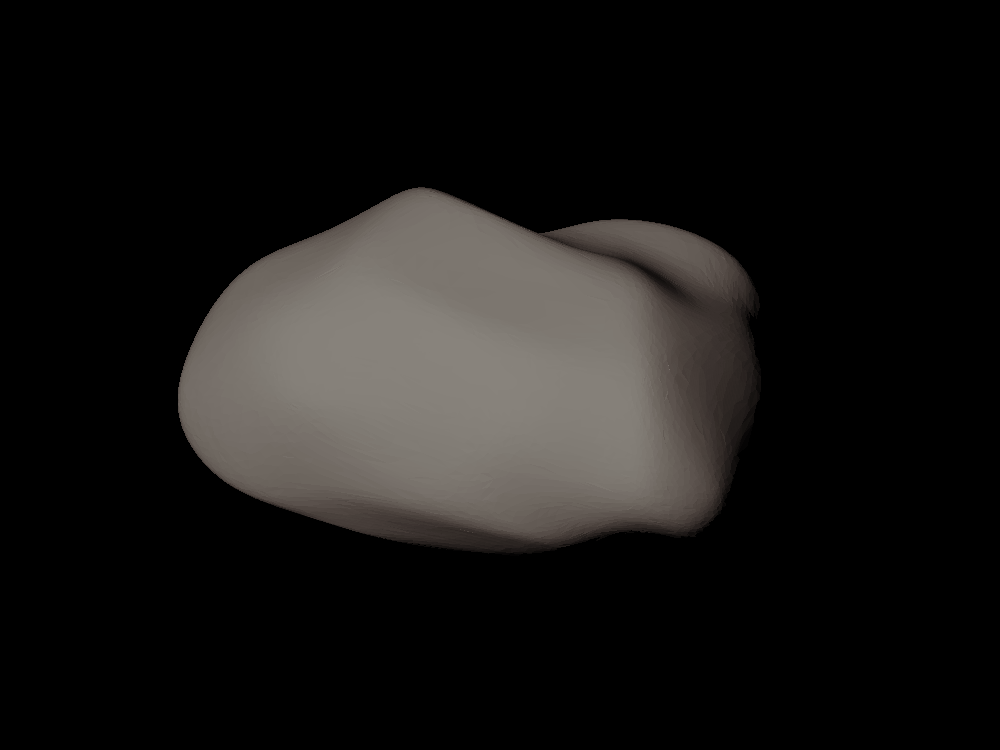
130 Elektra scaled one in four million
prusaprinters
<p>Originally published here: <a href="https://www.thingiverse.com/thing:5253013">130 Elektra scaled one in four million by tato_713 - Thingiverse</a></p><p>I did not render this model, I just softened and simplified the non-convex model available in the 3D Asteroid Catalogue site, where it is unreferenced, but I think that it is from Hanuš (2017). All three moons of it are too small to make in the same scale.</p><p>The file's names explained: <i>name_1_x_10_y.stl</i> is 1 : x* 10^y. So _1_6_10_7 is 1:600000000 or one in 60 million.</p><h4>130 Elektra</h4><p>This big asteroid with a pretty fast rotation is gaining popularity recently after the discovery of its third moon in 2021, making it the object with the most moons in the <a href="/tato_713/collections/main-belt-asteroids">Main Asteroid Belt</a>, and the second minor planet, after <a href="https://www.thingiverse.com/thing:3321413">Pluto</a>. This third moon is the closest to the asteroid, and orbits very inclined (38° with its rotational axis) and eccentric, making it to approach very close to the surface of the main body near its periapsis. Of course this must perturb the moonlet's orbit after the irregular terrain of the asteroid. Asteroid moons are thought to originate after impacts and shattering of the main body, along with its asteroid family members. Although all three moons are very small compared with the main body, 6, 2 and 1.6km versus 200km of the asteroid, minor planets are often referred as "multiple systems" instead of "asteroid-moons system", so that, Elektra is now called the "quadruple asteroid". This is because minor planets share their physical characteristics, so setting up a limit for the "multiplicity" of the system is not so objective. The exact opposite case is for the designation, no matter how similar in mass the components are, there is no figure for a "double asteroid" designation, both parts are named independently, as it happens with <a href="https://www.printables.com/model/57321-90-antiope-approximate-shape-scaled-one-in-two-mil">Antiope</a>, in which both parts are almost the same mass, but only the slightly bigger component should be called "Antiope".</p><ul><li><strong>Type:</strong> Asteroid. </li><li><strong>Orbit:</strong> Sun. Main Asteroid Belt. </li><li><strong>Orbital period:</strong> 5.53 yr. </li><li><strong>Rotational period:</strong> 5 h 13 min 28 s. </li><li><strong>Composition:</strong> Carbonaceous and ice. G-type. </li><li><strong>Density:</strong> 1.55 g/cm3 </li><li><strong>Dimensions:</strong> 262 km × 205 km × 164 km </li><li><strong>Model scale:</strong> 1:1x106 (26cm) 1:2x106 (13cm) 1:4x106 (6.5cm)</li></ul><h4>References</h4><ul><li><a href="https://www.aanda.org/articles/aa/abs/2017/03/aa29592-16/aa29592-16.html">Shape model of asteroid (130) Elektra from optical photometry and disk-resolved images from VLT/SPHERE and Nirc2/Keck. Hanuš et al. 2017</a></li></ul><h4> </h4>
With this file you will be able to print 130 Elektra scaled one in four million with your 3D printer. Click on the button and save the file on your computer to work, edit or customize your design. You can also find more 3D designs for printers on 130 Elektra scaled one in four million.
